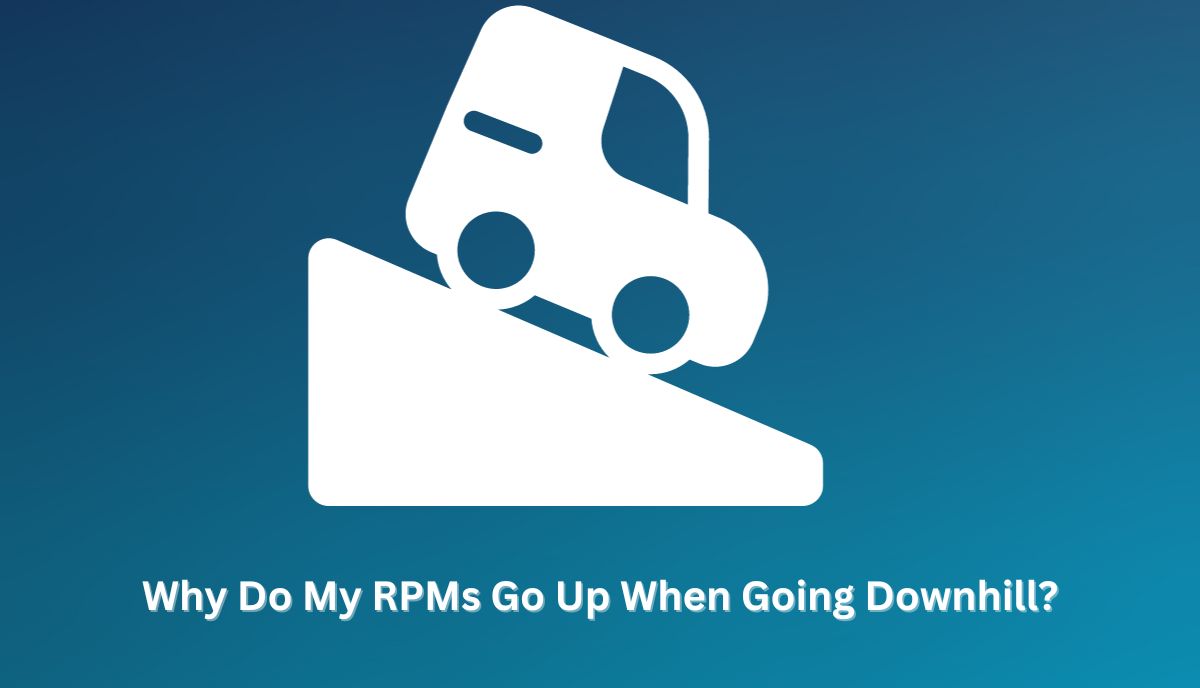RPM stands for ‘Revolutions Per Minute,’ and it spikes when you rev the engine. People expect the speed to increase with the RPM. A revving engine in a vehicle rolling downhill doesn’t concern them. After all, the car is clearly picking up speed because of the slope.
And if the speed is increasing, surely the RPM will also rise. But that is an oversimplification of an engine’s work and its connection to the RPM. Consider the following:
1). How RPM Works?
The car injects air and fuel into the cylinders. The mixture ignites, producing a detonation that pushes the pistons. This turns the engine’s crankshaft. The RPM defines the crankshaft’s revolutions per minute. Auto Hero has an animated image showing moving pistons and a rotating crankshaft.
The speed at which the wheels turn won’t influence the RPM or the information you see on the tachometer. Don’t expect the RPM to spike simply because a car is rolling down the hill.
2). How Are The Speed And RPM Related?
The speed can affect the RPM if the transmission, wheels, and engine are connected. But you can disconnect the transmission from the engine by shifting the gear to ‘Neutral.’ The RPM will spike once you rev the engine, but the speed won’t increase.
If you’re driving on the road, the RPM will increase with the speed, only to drop when you change the gear upward. The engine becomes less noisy because the RPM has fallen.
3). Does The RPM Matter?
You don’t need a tachometer to tell you an engine is revving. The sound will let you know. However, the RPM still matters because it allows you to change the gears smoothly if you pay close attention to the readings. Experts will use the RPM to analyze the engine’s performance.
With all that in mind, what causes over-revving downhill? This phenomenon isn’t necessarily dangerous, and it won’t concern you unless revving while going downhill is new to you. The following may explain your experience:
1). DSG Transmission
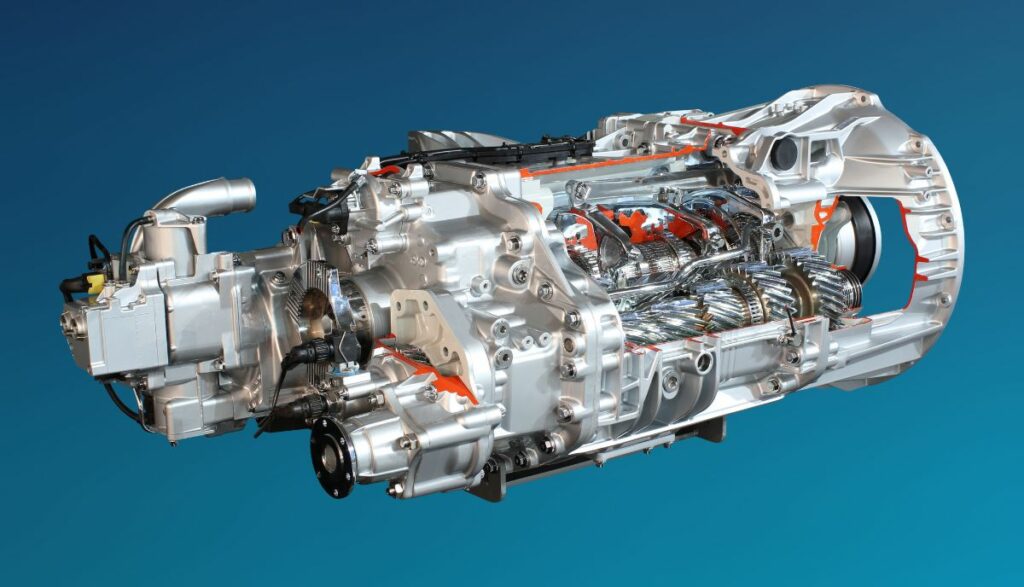
Revving can occur because of engine braking. The vehicle will shift to a lower gear. But you shouldn’t worry. Engine braking, even with the revving, is beneficial because it controls your descent.
Kenny R from the Briskoda forum has observed that revving occurs when you touch the brakes. You must also steer clear of the throttle. If you’ve never heard of DSG transmissions, they consist of a pair of separate clutches that work in tandem to make smooth and rapid gear changes possible. A DSG transmission can downshift when you step on the brake.
While the feature annoys some drivers, others love the fact that it minimizes overheating in brakes. Tapping the gas pedal slightly will disengage the function, assuming you don’t want engine braking.
2). Gravity
Are you sure the engine is over-revving, or did you reach that conclusion because the RPM is higher than usual? If you’re going downhill in a car with an engaged transmission and an engine connected to the wheels, the engine’s RPM may increase because of the speed from the descent.
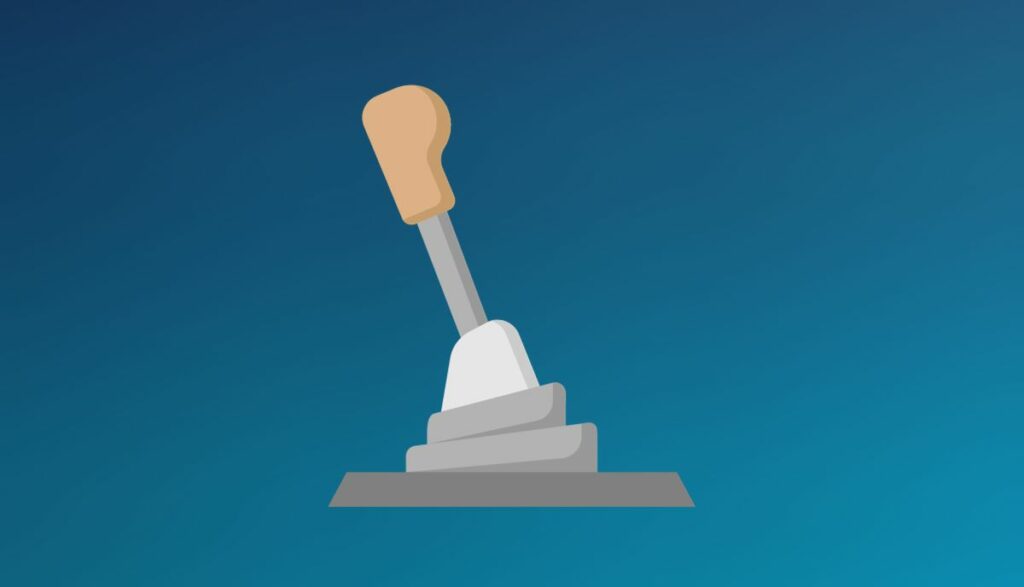
This assumes that you’re still in gear. The motion from the wheels will rotate the engine. Change the gear to ‘Neutral.’
3). Coasting Function
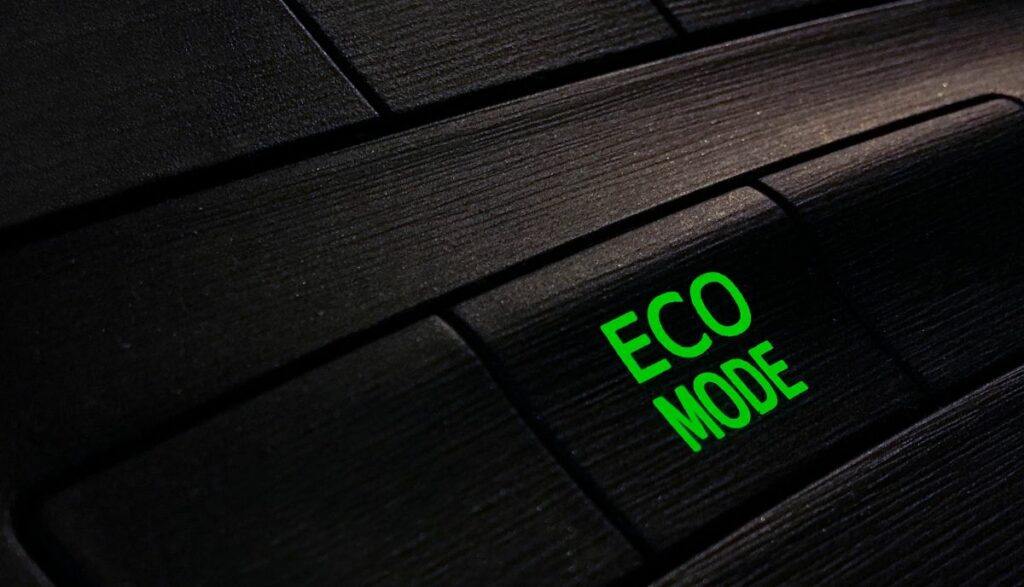
Does your vehicle come with a ‘Comfort’ or ‘Eco’ mode? If you enable it, the car will use the coasting function.
4). Software Glitch
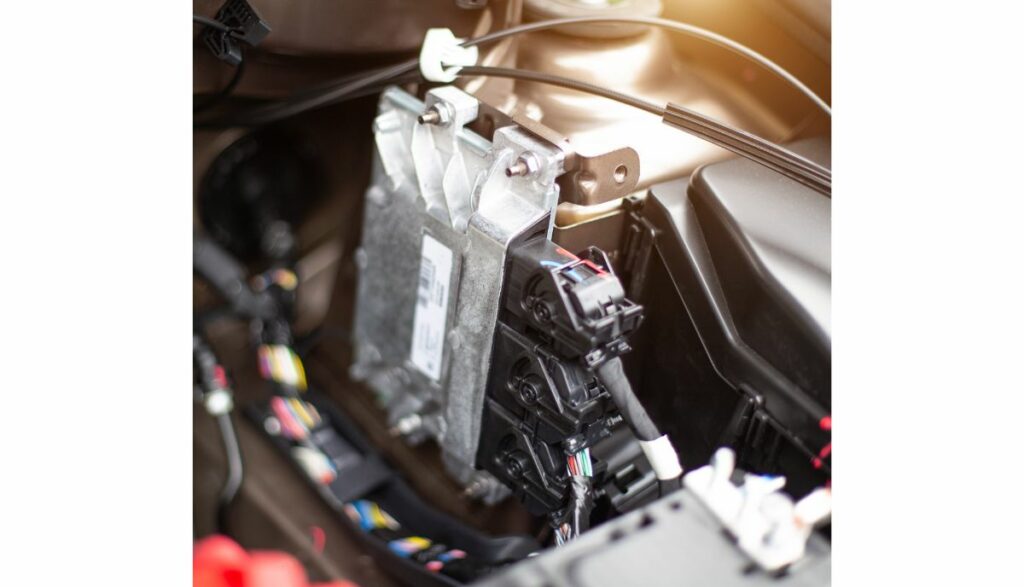
You wouldn’t expect a software glitch to influence the RPM. However, modern ECUs are sophisticated. They control every aspect of the engine’s work. DPS20K from this Marco Polo Owners Club forum complained about severe downshifting in their vehicle. When they consulted an expert, the local dealer recommended a transmission software update, which they installed.
The problem disappeared. Pumpsmynads from the same forum spoke to experts in Germany. He linked his car to their computer, uploaded data, and downloaded patches. This fixed the problem. Therefore, you shouldn’t rule out updates and software errors as potential culprits.
Keep in mind that an ECU can track the vehicle’s speed and how quickly (or how strongly) the driver steps on the accelerator before deciding to shift down.
How Can A Driver Safely Control Or Mitigate Automatic Over-Revving To Prevent Engine Damage Or Loss Of Control?
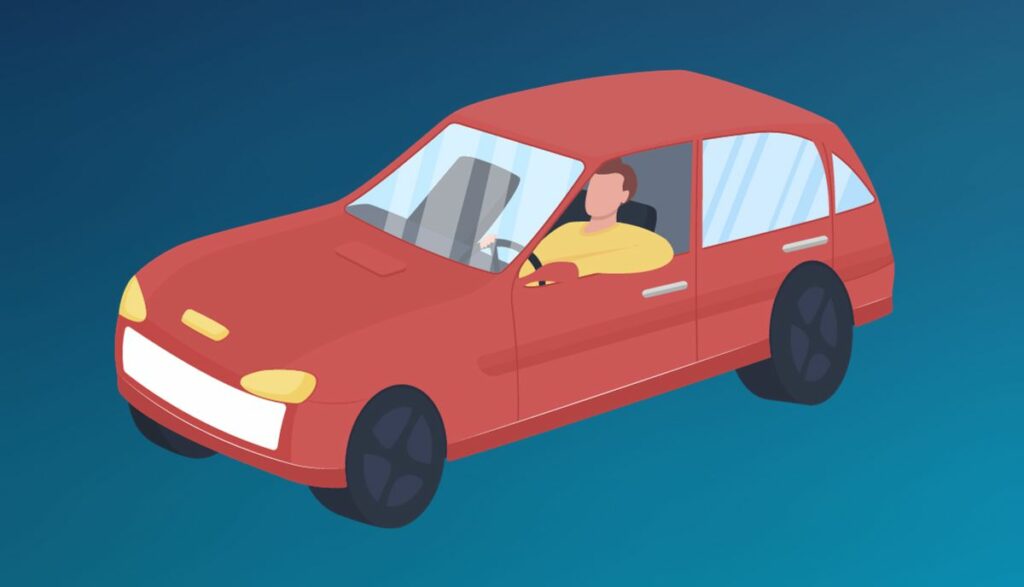
For the most part, you don’t have to do anything. Engine braking, which leads to revving, is designed to keep you from losing control. It will shift to a lower gear to slow the vehicle as you coast down a slope.
The absence of engine braking is a more significant concern. If you can only rely on the brakes, they will wear out at a faster rate, especially if you routinely traverse steep roads. The brakes can even overheat because of the friction.
You should only panic if revving occurs in a vehicle without the engine braking. You can also disable the function with the press of a button in sophisticated models. If the downshift continues regardless, take the car to an expert.
Don’t take any chances, particularly in situations where the engine is revving beyond the acceptable RPM. In those cases, you need expert assistance. Besides connecting a scanner and retrieving the error codes, a mechanic can inspect a vehicle’s computer, engine, and transmission.
Ultimately, revving is risky. It can increase fuel waste and toxic emissions while simultaneously damaging the engine.
Are There Any Warning Signs Or Dashboard Indicators That Signal Automatic Over-revving Issues When Driving Downhill?
Revving that only occurs when you drive downhill isn’t a significant concern because you can chalk it up to engine braking. Revving should only concern you if it occurs in other instances or when it exceeds the RPM and noise levels you expect.
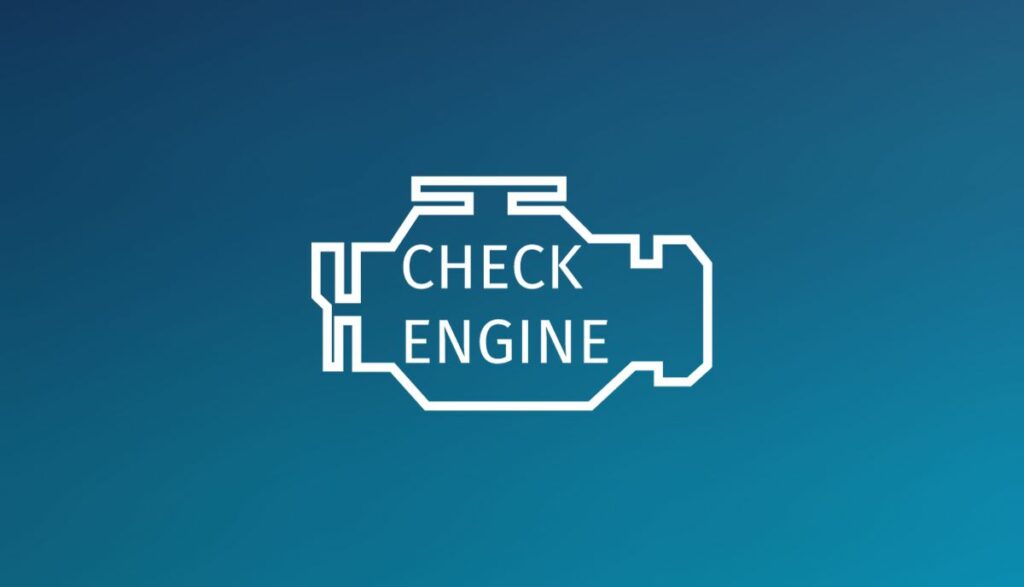
The only warning you should expect is the tachometer, which keeps you apprised of the vehicle’s RPM. The ‘Check Engine’ light may also illuminate in response to a serious defect, such as a vacuum leak, fuel injector problems, or carburetor issues. Otherwise, manufacturers don’t include dashboard indicators that specifically alert users about over-revving.
Does The Type Of Transmission, Such As Automatic Or Manual, Impact The Likelihood Of Automatic Over-revving Downhill?
No, it doesn’t. Engine braking is the primary cause of revving when you drive downhill. The transmission type isn’t nearly as important as some people think.
What Are The Potential Consequences Of Ignoring Or Neglecting Automatic Over-revving Issues When Descending Slopes?
Troublesome sources of a fluctuating RPM include the following:
- Are the fuel injectors dirty? Clogging can create revving and acceleration problems.
- What about the vacuum hose? Is it torn? The air and fuel won’t reach the engine in sufficient quantities.
- Have you looked at the spark connectors? The vehicle may jolt because of damaged ignition wires and sparking connectors.
- The vehicle may jerk and rev because of a blocked catalytic converter.
- The carburetor can develop blockages, leading to a fluctuating RPM.
- A clogged air filter is the easiest issue to resolve. However, it can cause significant damage by restricting the air supply if the problem goes unchecked.
- Talk to a mechanic if you think the engine cylinders are defective. Otherwise, the engine won’t work correctly.
- The transmission is the first aspect mechanics inspect. Insufficient transmission fluid due to a leak will cause more revving than usual because of a slipping torque converter. Don’t be surprised if the gears refuse to shift or you observe delays.
Some malfunctions are more severe than others. For instance, any layperson can replace dirty spark plugs and clogged filters. You can’t say the same about a blocked catalytic converter and faulty carburetors.
A fluctuating RPM (and revving) is merely the first of many symptoms you will observe if you ignore these symptoms. For instance, the engine’s power will deteriorate. The vehicle’s fuel consumption will increase dramatically.
The engine’s life expectancy will fall because of the added strain. If it overheats, the high temperatures will wreak havoc on the cooling system. You can’t predict the eventual outcome. Even if the engine survives, your repair costs will skyrocket.
Unless you’re ready to spend thousands of dollars on a new engine, take the vehicle to a repair shop before it suffers irreversible damage.

